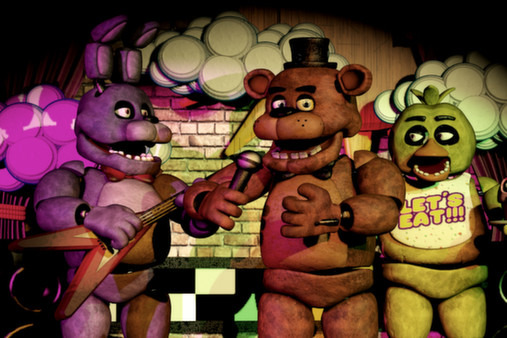Lore and worldbuilding have the power to ignite passion in players and fuel an immersive experience. At their best, lore-driven games create a sense of mystery and discovery that motivate players to explore each part of the world. However, some recent games have exploited lore and ambiguity primarily as a marketing tactic, rather than using it to enhance gameplay or build meaning.
This phenomenon highlights the need for more balanced, player-centered design. When developers commit to transparency and ethical practices, lore can be used to strengthen community trust and craft impactful stories. But that depends on valuing immersion and artistry over profits alone.
We’ll dive into the history of lore focused games, what happened and where to go from here. This is all inclusive of the entire indie scene, even if there’s a heavy emphasis on mascot horror. It makes the best example and we’ll avoid referencing mascot horror to mean anything more than games focused in that niche.

The History of Lore Focused Games
Lore propels players to explore. Their questions – Why is this here? What’s really going on? – uncover the backstory and worldbuilding. Games from long ago like Arcanum, Fallout 1 & 2, and LucasArts’ classics excel at using lore to tell the story while modern games continue the process with quests that spoon feed players information about the world and collectables and audio logs to delve deeper.
Ambiguously narrative games can be seen starting with Shadow of the Colossus for 3D games, where you ride around the world fighting Colossi and a story that doesn’t explain itself without paying attention to the world and its subtle hints. It really became more mainstream with games like Dark Souls which the story is intentionally obscure. This lore can only be found from NPC’s, environmental clues and item descriptions.
You can gather all of this through osmosis by enjoying the game. Hollow Knight doesn’t outright explain everything in detail, but there’s also a lot of gameplay going on that puts the story more or less in the backseat. The reason to go do something isn’t explicitly given, you are motivated by gameplay to continue.
This was the standard norm until Five Nights at Freddy’s was released late in 2014. Following the initial game, there was a barrage of sequels. FNAF 2 was released 3 months after the first game. FNAF 3 and 4 came out in 2015. Sister Location was released in 2016. Pizzeria Simulator was released in 2017. Ultimate Custom Night was released in 2018. FNAF: Help Wanted released in 2019, marking a longer pause. Security Breach then released in 2022, 3 years later.
FNAF: Lore’s Mainstream Introduction
Five Night’s at Freddy’s, the very first game, only gave players a few bits of lore to work off of. There were a few newspaper clippings you could see with the camera. There was a golden Freddy jump scare. Starting each day had a voicemail that gave some details on what was going on. Outside of that, there was nothing. You were not given a reason for:
- Returning the next day to work after knowing what’s going on there.
- Why are the animatronics acting the way they are?
- What the bite of ’83 was.
- Who the security guard is and who is behind all of this.
Those and many more questions swirled in player’s minds as they spooled up wikis and began to put together the clues. Scott who was the only developer at the time, quickly spun out more games that didn’t actually answer any of those questions, it hinted at potential answers for some while asking many more.
Each game after that hasn’t concisely told much of the story to FNAF. You can read our security breach’s true canon ending’s guide for a sample of how the game doesn’t spell it out. This is of course, free marketing.
Free marketing is what made FNAF the franchise it was. Word of Mouth (WoM) marketing occured generating a feedback loop of discussion and attention on a game that most of the players weren’t playing. You don’t have to play the game for the lore to matter.
Merch Sales > Game Sales
The FNAF games themselves are actually quite hard to play unless you’re into the mechanics and even then, the fangames are often a much superior choice over the actual FNAF games themselves. They’re also rather cheap and often way more fun to watch your favorite influencer to play and react to ’em. More fun then it is to do so yourself. Which brings us to another interesting fact: FNAF is more of a merch empire than a video game empire.
It’s hard to monetize a game that’s more entertaining to figure out than it is to play. It’s often fair for the developers to capitalize on the interest in their world (more so than their game) and market collectables and other merchandise around it. So, while you might not buy or even play the game, you might have a t-shirt, mousepad, stuffed animal or something else collectable from the game itself.
FNAF of course has well-earned this, being a long-running beloved franchise that has treated its fan base well. It’s also a rather lucrative position to be in. You barely have to make a game and then cash in the merchandising. Well, that’s a revenue stream and what was a low competition market, which creates copycats like Bendy, Hello Neighbor, Poppy’s Playtime and many others.
Saturation of lore-based games (that are more fun to interact with or research or watch than to play) increases with each release, causing fatigue in the community.
Hello Lore and Goodbye Story
Too much of a good thing can become tiresome sometimes. After FNAF many other landmark series like Bendy and the Ink Machine were released following a similar story format. Give the player little to nothing, have cute merchandisable characters and appeal to let’s players by breaking the game into parts and gating the releases. This creates constant attention and free marketing from let’s players who play each new release once to play it and again to uncover the secrets. For the dedicated, each release gets a third “the story explained” video.

This was actually fine until Hello Neighbor started gaining traction. It was in an interesting spot, where it didn’t have any story or lore but great gameplay. The Neighbor would learn as you went through the house and it was an entertaining sandbox to play with. That success was interrupted in the wrong way and things like lore were jammed into the game. Several args, lots of other things, which ended up resulting a mediocre showing for Hello Neighbor 2 which suffered from too many direction changes, not enough consistency between alphas and the dev team spending more time on the marketing than the game itself.
There’s a lot of good YouTube series on Hello Neighbor, this one I can recommend as being entertaining.
Copying the Formula
That was just the first. After Hello Neighbor’s odd fall from grace, there were many other copycats to the lore buffet who failed to provide any substance to their game and instead leaned heavily on the there’s more afoot here than you think. Poppy Playtime arrived focusing more on lore and less on gameplay, causing yet another mediocre game with too many questions.
Which brings us to today, where games like Garten of BanBan are actually developing in the indecisive direction as it tries to balance lore, marketing and revenue with the community’s fatigue on the subject and overall disdain for any optics that a game is trying to “cash out” on the trend. The latest game being lambasted online for its short retime barely above the return window on Steam and its fourth wall breaking meta commentary on the community response to the second game.
Of course, that’s not to say these games aren’t successful. That’s to say that there’s definitely a lot of community angst around them and the format they’re going in. Which could be how they evolve, if you let it.
What Can Be Done
Be honest.
Honestly, that’s everyone’s best bet. Game developers want to make a profit off of their work more often than not. There’s a market to allow them to do it. The market has to speak to them and tell them what it wants.
If a game does something you don’t like then be vocal with your review. If the playtime felt a bit sketchy, add that to your review. Even if you felt that the game’s tone, direction or overall enjoyment was good or bad then you should post a review and let others know.
You can also vote with your wallet. Don’t purchase more of a series you’re not into and let a series fade away that you don’t have interest in. Avoid videos about it and honestly focus your time on healthier pursuits. If everyone followed this ideology then the views, marketing and hype would match the community’s interest.
Being honest to the developers is the only way to go. FNAF’s community is very honest and Scott has been receptive. He’s stepped back from the game more. He’s gotten involved in the aspect the community loves (lore) and let others take on the video game part. All very healthy and positive things.
There’s a great blueprint for it out there and lots of games who have followed along. Bendy received a lot of positive reception for delaying its sequel to allow for them to release it all at once. Of course, the game was less community directed and suffered some for it. At the same time the community was happy to have a fully contained story within a game and a lot of loose ends from Bendy’s original game tied up.
Lore and the Future
Lore-driven games have brought many benefits to gaming, igniting passion in fans and fueling engaging online discussions. However, some recent games have relied too heavily on lore and ambiguity to generate interest, rather than focusing on innovative gameplay, storytelling, and an enjoyable experience for players. That can be kind of sad, especially for such a fun genre like indie games and for something even more fun like ARGs and game lore.
Developers have an opportunity to learn from both the successes and failures in this genre. By listening to feedback and being transparent with fans about their creative intentions, developers can build goodwill and trust. The most compelling lore-based games are renowned for their artistry, not just their marketing. Developers should aim to strike a balance between mystery and revelation, providing resolution and rewarding players for their time and investment.
With a balanced, player-first approach, lore can enhance immersion in purposeful ways. But it depends on a foundation of respect between creator and audience. Some recent backlash shows that players want higher standards, not superficial exploitation of formulas to go viral.
The rise of lore-focused games demonstrates the potential for impact in today’s market, if developers commit to ethical design and quality. When done well, a game’s lore, world and characters can make a lasting impression. The future of atmospheric, story-driven games relies on that commitment to players, not profits alone.






